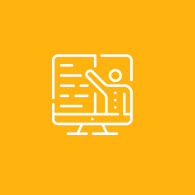For more than a decade, MathBoxe and its Suite of associated programs has been providing quality online Math services to students that have difficulty achieving grade-level proficiency. We have been helping students who struggle with Mathematics in more than 27 states through individualized, interactive, research-based teaching methods and interventions that have proven success with supporting data. Our question bank contains hundreds of thousands of Math problems that meet Common Core State Standards (CCSS) and 50 States standards for grades 2-12 students. We also provide a range of necessary time-saving tools which help teachers create a learning environment that is mathematically empowering.

Once the state or any national council has published its standards, we are able to use those guidelines to generate grade specific questions. When we create the curriculum for a state, we take the relevant standards from the Department of Education website for that state. The standards are usually broad. We take the standards for each grade and further subdivide them into more specific components to provide meaningful targets for instruction and assessment. Once we have the template ready with the standards, we then add relevant assessment and practice Math items for each grade level.
It is really important to align instruction and assessment to state or relevant standards. When instruction and assessment is aligned to relevant standards

A 1997 research monograph, by Norman Webb of the National Institute for Science Education at the University of Wisconsin-Madison suggests that establishing alignment of standards and assessments is an early indicator that helps assure a state's standards and assessments will reach their full potential. He also points out on his report that a test, or tests, and a curriculum framework that are in alignment will work together to communicate a common understanding of what students are to learn, to provide consistent
Authentic assessment is aligned with the curriculum. It assesses what we teach and what we value (Stiggins, 1994; Valencia, 1990; Wiggins, 1989). Deciding the important outcomes is not always easy, but it is a critical first step in creating authentic assessments. There are many helpful resources for teachers : state and district curriculum guides, published instructional materials, national standards documents, and professional colleagues (Au, 1994; Valencia & Place, 1994).
Research findings indicate that the practice of aligning assessments and instruction to content standards can be linked to increased learning outcomes for both students with and without disabilities (Browder, 2006; Thurlow, 2003; Wiener, 2005).
Our program employs a research-based, balanced, comprehensive approach to teaching and our instructional practices are based on scientific evidence.


AFT (American Federation of Teachers) recommends Diagnostic Tests and strongly believes that this type of assessment allows teachers to diagnose students' content knowledge and remediate any weaknesses by adjusting curricula and instruction to meet student needs.

Before dividing into the actual tutoring session, we want to quickly understand a student's current knowledge of the Math concepts related to the session. Students are not expected to know the answers to all of the questions; however, they are expected to utilize previous knowledge to predict rational answers.

After the Pre-Review session, students work on the 'Learning Session', which is the 2nd part of the "isession". The Learning Session has been thoughtfully designed to help students learn new concepts, develop strong knowledge of Math fundamentals, and build problem-solving skills. The session provides students with helpful hints on how to answer each Math question correctly. Students may click on the "Hint" button and carefully review the step-by-step guide of how to solve Math questions at their own pace.

After completing the Learning Session, the student moves on to the Practice Session. Here students practice on similar questions that he/she just learned in the Learning Session. This helps the students retain the learning they were just taught and to develop their individual Math skills. Students may review the 'step-by-step' solution for each question if they need help in solving it.

When taking the Review session at the end of an "isession", students should be expected to answer more questions correctly based on an increase in knowledge and understanding. The score on this session helps teachers determine if the student has 'mastered' the related Math concepts or not.
4 components discussed above, reflect exact class-room teaching. In these four sessions, we repeat a good number of Math items to reinforce the Math concepts. A few “isessions” may appear similar, but are different in important ways that help students successfully progress.
In Mathematics 'drill and practice' can increase the conceptual understanding of a topic. Teachers strongly believe that drill and practice are among the most important techniques for teaching Mathematics.
We have been successful helping students who are falling behind grade-level proficiency. Since 2005-06, students have used our platform and experienced an average 17 point increase in pre and post- assessment results. In addition, 83% of our students reported that their Math grades went up in school. In our home state of Georgia, 65% of students passed/exceeded the state Math tests (CRCT, EOCT, and GHSGT) after using our program. We have a solid track record of helping low-performing students succeed.
Exclusive Teacher Resources and Tools Our state-of-the-art reporting system analyzes data and produces efficient, easy-to-understand reports to help teachers improve instructional practice and maximize student learning. It reduces teachers' workload, saves time, and removes a lot of their most labor intensive, repetitive and time consuming tasks. A wealth of information at teachers' fingertips: detailed reports showing student grades for every Math session; summary reports showing student progress by topic, remediation, additional practice to reinforce classroom learning, and homework assignments which can easily be prepared weeks in advance of the teachers' plan to present such work to students.

Through interactive and iterative tutorial "isessions", students can build strong Math skills and achieve higher test scores in Math and improved Math grades. Students that spend at least 30-40 minutes 3 times a week on the program and teachers that make use of the monitoring tools and reports proficiently will have a rewarding experience using our Math program.